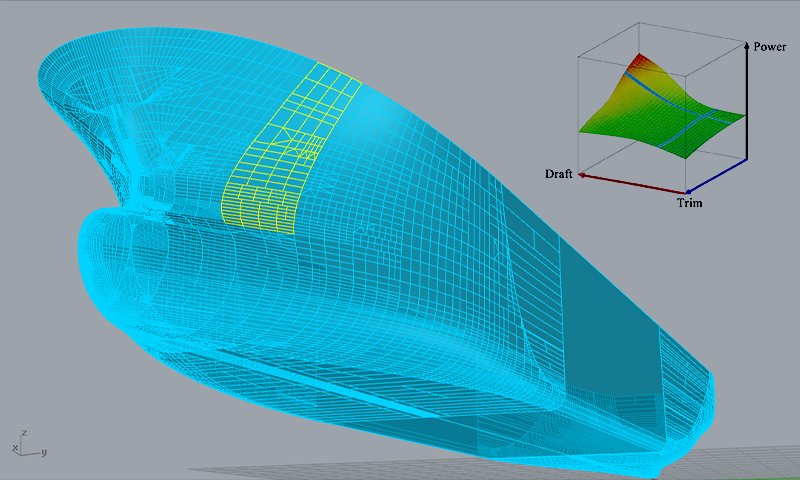
To cope with climate change, IMO is strengthening GHS(Green House Gas) emission regulations to reduce green-house gas emissions by 50% compared to 2008 by 2050. IMO also strengthen regulations of ship energy efficiency for new building ships as well as existing ships built before 2013. The EEXI(Energy Efficiency Existing ship Index) is part of the technical approach taken by IMO to improve operational efficiency. CII(Carbon Intensity Indicator) aims to increase operational efficiency by improving the ship's fuel efficiency as an indicator calculated based on ship's fuel usage, sailing distance and time. The CII measures how efficiently a ship transports goods or passengers and is given in grams of CO2 emitted per cargo-carrying capacity and nautical mile. The ship is then given an annual rating ranging from A to E, whereby the rating thresholds will become increasingly stringent towards 2030. While the EEXI is a one-time certification targeting design parameters, the CII addresses the actual emissions in operation.
The OBFC, TECHMARINE S/W's trim optimization module, can help to improve this CII as a module to derive trim and drafts that allow ships to operate using less fuel and to establish an optimized ballast water loading plan. MEPC 63/INF.7 reported that energy saving of up to 1.5% can be expected via trim optimization. Apart from the efficiency of the ship engine, the trim and draft of the ship are one of the major factors to affect directly fuel efficiency. Operating on trim & draft with less resistance reduces fuel consumption and improves fuel efficiency. OBFC finds the least resistant optimum trim and draft by using hull resistance analysis of CFD(Computational Fluid Dynamics). OBFC creates a ballast water loading plan to maintain optimized trim and draft. The ballast water loading plan is proposed to the user after finding a loading plan to satisfy trim optimization by substituting the number of all possible cases in the ballast water tank of the ship. The proposed ballast water loading plan is evaluated for stability and strength and the optimum ballast water loading plan is to satisfy both fuel efficiency and stability. OBFC is a module as added to SHIPMANGER-88 that can be adapted to all vessels equipped with or installed SHIPMANGER-88 and can be used to determine the vessel's trim condition using ballast water before operation after completion of loading and unloading of the vessel.
The development of OBFC was carried out by the NIPA(National IT Industry Promotion Agency) sponsored support project. The feasibility evaluation & creation of CFD test data were produced by the Hyundai Heavy Industries Resistance Promotion Laboratory and UNIST(Ulsan National Institute of Science and Technology) was involved in the ballast water loading planning algorithm.
And then, patent registration was approved by the Korean Intellectual Property Office under the name of "The ship's attitude control system and its control method" in recognition of its method and utility.

